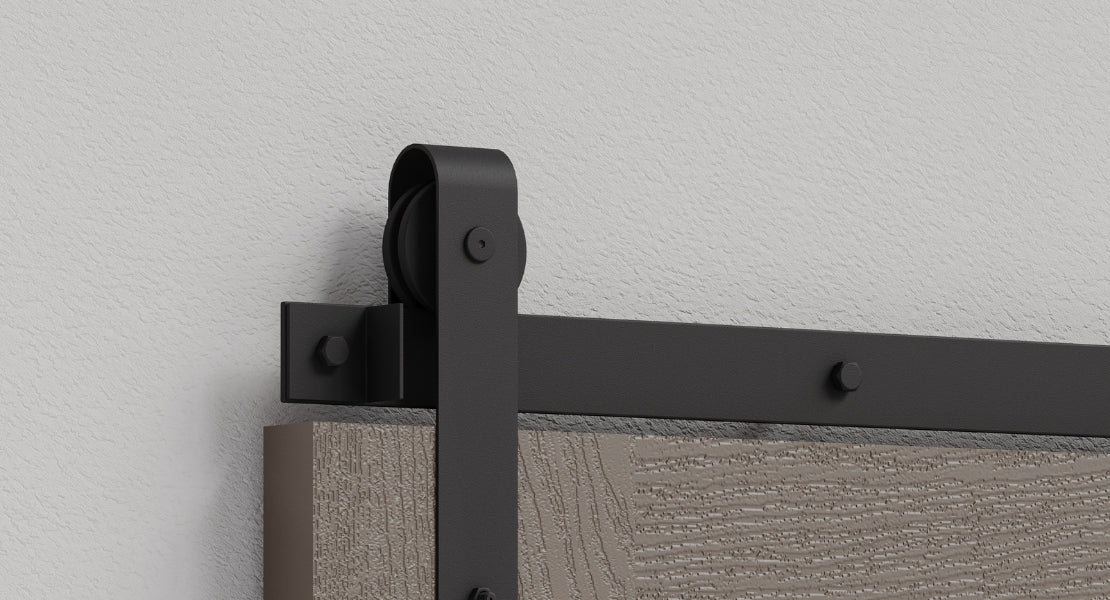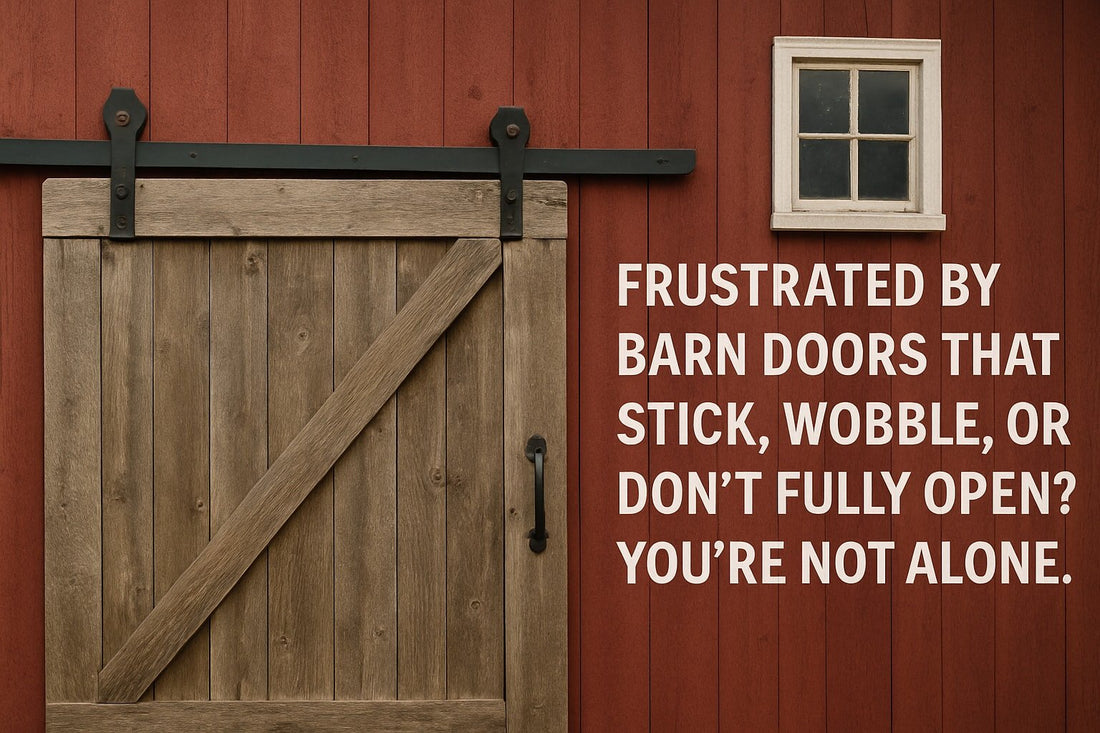
Barn Door Track Bypass Guide: Tips for Smooth Installation 2025
Are you tired of barn doors that stick, wobble, or never seem to glide smoothly? You are not the only one facing these barn door headaches.
This guide is here to clear up the confusion around barn door track bypass systems. You will find straightforward tips and the latest installation strategies for a flawless, smooth setup.
Get ready to explore different types of bypass hardware, essential planning steps, a detailed installation walkthrough, troubleshooting tips, and expert recommendations for lasting results. If you want that professional look and hassle-free operation, you are in the right place.
Understanding Barn Door Track Bypass Systems
Ever wondered why some sliding doors can glide past each other while others get stuck or block the opening? That’s where a barn door track bypass comes into play. This system lets two or more doors slide independently on parallel tracks, allowing them to overlap and provide access to wide spaces without needing extra wall clearance. Unlike standard sliding tracks that only allow one door to move, a barn door track bypass is designed for shared spaces like closets, pantries, or room dividers. If you want to dig even deeper, Bypass Barn Door Hardware Explained offers a great breakdown of how these systems function and what sets them apart.
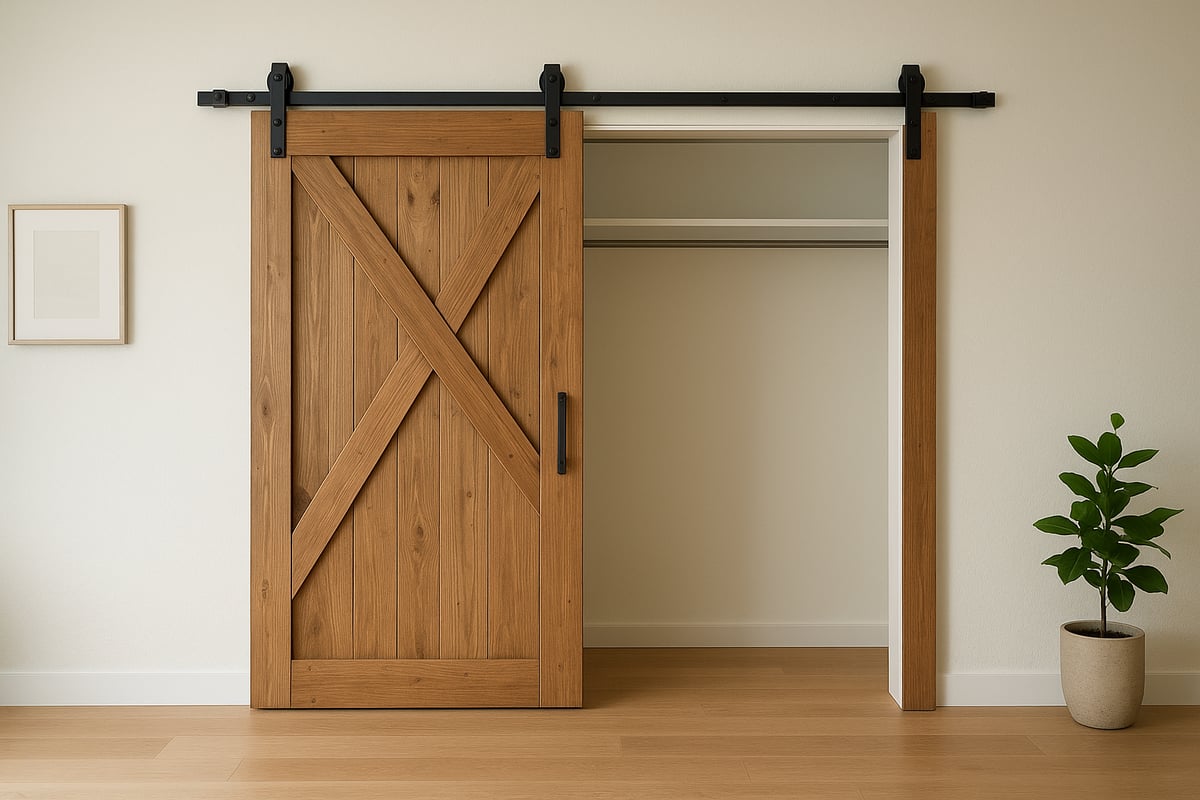
What Is a Barn Door Bypass Track System?
A barn door track bypass is a clever sliding door solution where two or more doors can move past each other on separate tracks. This means you do not need a long, empty wall for both doors to slide open. Instead, the doors overlap as they move, making this system ideal for tight spaces. You will often see a barn door track bypass on closets, pantries, or large openings where traditional swinging doors are not practical. There are single and double track setups, each offering unique benefits for different layouts. By saving wall space and maximizing access, a barn door track bypass brings both function and style to your home.
Types of Bypass Track Systems
You have a few main choices when it comes to barn door track bypass systems. The single track bypass is sleek and modern, using less hardware while keeping a compact profile. Double track bypass systems are more traditional and allow each door to move independently on its own track. For even wider openings, triple track and specialty systems are available. You can choose between ceiling mount or wall mount options, depending on your room’s structure. Plus, finishes like matte black, brushed nickel, or rustic steel let you match your barn door track bypass to any décor.
Single track: space-saving, fewer parts
Double track: classic look, independent movement
Triple/specialty: for extra-large spaces
Ceiling vs. wall mount: flexible for different rooms
Material/finish: modern, rustic, or industrial
Key Components of a Bypass Barn Door System
Every barn door track bypass system relies on a few essential parts. Tracks and rollers support the doors and allow smooth movement. Hangers attach the doors to the rollers. Bypass brackets and spacers create the layered effect so doors can overlap properly. Floor guides keep the doors stable, while end stops prevent them from sliding too far. Some setups include soft-close dampers for gentle stopping and stylish handles for easy operation. Always check door compatibility, as not every barn door track bypass works with all door thicknesses or materials.
Tracks, rollers, hangers
Bypass brackets, spacers
Floor guides, end stops
Soft-close dampers, handles
Door thickness/material compatibility
Benefits and Drawbacks of Bypass Systems
A barn door track bypass lets you access wide doorways without needing a lot of wall space. This system is great for enhancing privacy and controlling light, especially in shared rooms or closets. You can choose a modern or rustic look, depending on your hardware and door style. However, installing a barn door track bypass can be more complex than a standard sliding door, requiring careful alignment. It may also cost more and leave more hardware visible. Still, the space-saving and functional benefits often outweigh these minor drawbacks.
Pros:
Maximizes access in tight spaces
Improves privacy and light control
Stylish and customizable
Cons:
More complex installation
Higher cost
Visible hardware
When Is a Bypass System the Best Choice?
A barn door track bypass really shines when you have wide or shared openings but limited wall clearance. Think closets, laundry rooms, pantries, or as a room divider in open-plan homes. If you are deciding between a barn door track bypass, bifold, or pocket doors, consider your available space and desired style. Real-world examples include apartments with minimal wall space, or family homes where easy access is a must. The barn door track bypass is often the go-to choice for modern renovations and functional upgrades where flexibility and aesthetics are key.
Planning Your Bypass Barn Door Installation
Getting ready for a barn door track bypass project? Careful planning is the difference between a flawless finish and ongoing frustration. This section walks you through measuring, hardware selection, prepping your space, and avoiding the most common pitfalls.
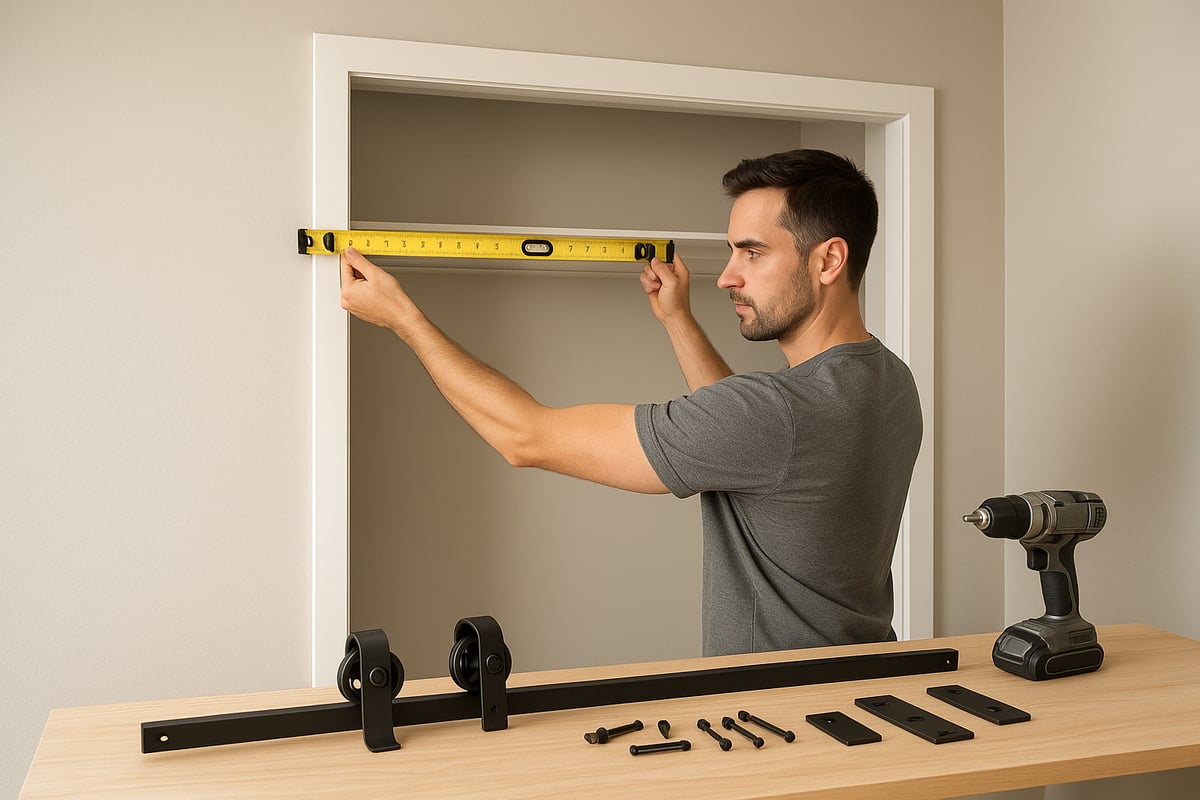
Measuring and Sizing for Bypass Tracks
Start with precise measurements. Use a steel tape measure for accuracy. Measure the width and height of your opening at multiple points—walls and floors are rarely perfectly square. For barn door track bypass installations, the slab width formula is simple: divide the opening by two, then add about three inches per slab for overlap and privacy.
For example, a 60 inch opening would need two doors, each 33 inches wide. Standard track lengths usually come in 6, 8, or 10 feet, but custom sizes are available. Always check that your doors will cover the opening with enough overlap to block sightlines and sound.
Double check your numbers. Too little overlap means gaps and lost privacy, while oversized doors can rub or restrict movement. Getting these measurements right is the foundation for a successful barn door track bypass install.
Selecting the Right Hardware Kit
Choosing the right hardware kit for your barn door track bypass is essential for smooth operation and durability. Consider your opening size, number of doors, and desired style. Single track bypass kits are sleek and space-saving, while double track systems allow independent door movement—ideal for wide openings.
Check weight ratings; many kits handle doors up to 250 pounds each. Match the finish and design to your room, whether you want matte black, satin nickel, or a rustic look. Make sure your kit includes all the essentials: rollers, brackets, handles, and floor guides.
Not sure where to start? Browse Bypass Barn Door Hardware Kits for a range of options that fit various needs. Always verify compatibility with your door thickness and material before purchase.
Wall and Ceiling Considerations
Before mounting a barn door track bypass, inspect your wall or ceiling. Use a stud finder to locate framing—tracks must anchor into solid wood, not just drywall. If studs are missing, add a backer board for support. For masonry surfaces, use appropriate anchors and double check load limits.
Decide between wall or ceiling mount setups. Ceiling mounts are great for minimal wall clearance, while wall mounts are more common and easier for most DIYers. Check for at least six inches of clearance above your opening for track and roller movement. Also, ensure there’s enough space beside the opening for doors to slide fully clear.
A strong, level mounting surface prevents sagging, sticking, and uneven movement—critical for barn door track bypass systems.
Tools and Materials Checklist
Gather all your tools before starting your barn door track bypass project. Here’s a basic checklist:
Drill and drill bits
Level (at least 4 feet long for accuracy)
Tape measure
Wrench or socket set
Stud finder
Safety glasses and gloves
Pencil for marking
Floor guides and soft-close dampers if desired
Most kits include the main hardware, but check the box for missing pieces. Download installation instructions or guides, if available, for step-by-step clarity. Having everything ready keeps your barn door track bypass project stress-free and on schedule.
Common Planning Mistakes to Avoid
Even experienced DIYers slip up when planning a barn door track bypass. Watch out for these common mistakes:
Miscalculating door overlap or track length
Skipping wall reinforcement or missing studs
Buying hardware that doesn’t fit your door’s thickness or weight
Forgetting to plan space for the door to slide freely
Overlooking floor guide placement, which can lead to wobbling doors
Take your time with the prep work. A little extra attention now prevents frustration later and ensures your barn door track bypass operates smoothly for years to come.
Step-by-Step Bypass Barn Door Track Installation Guide
Ready to tackle your barn door track bypass project? This guide will walk you through each critical step, so you can achieve a smooth, professional result—even if you’re new to DIY. Let’s get started and make sure your barn door track bypass system glides perfectly from day one.
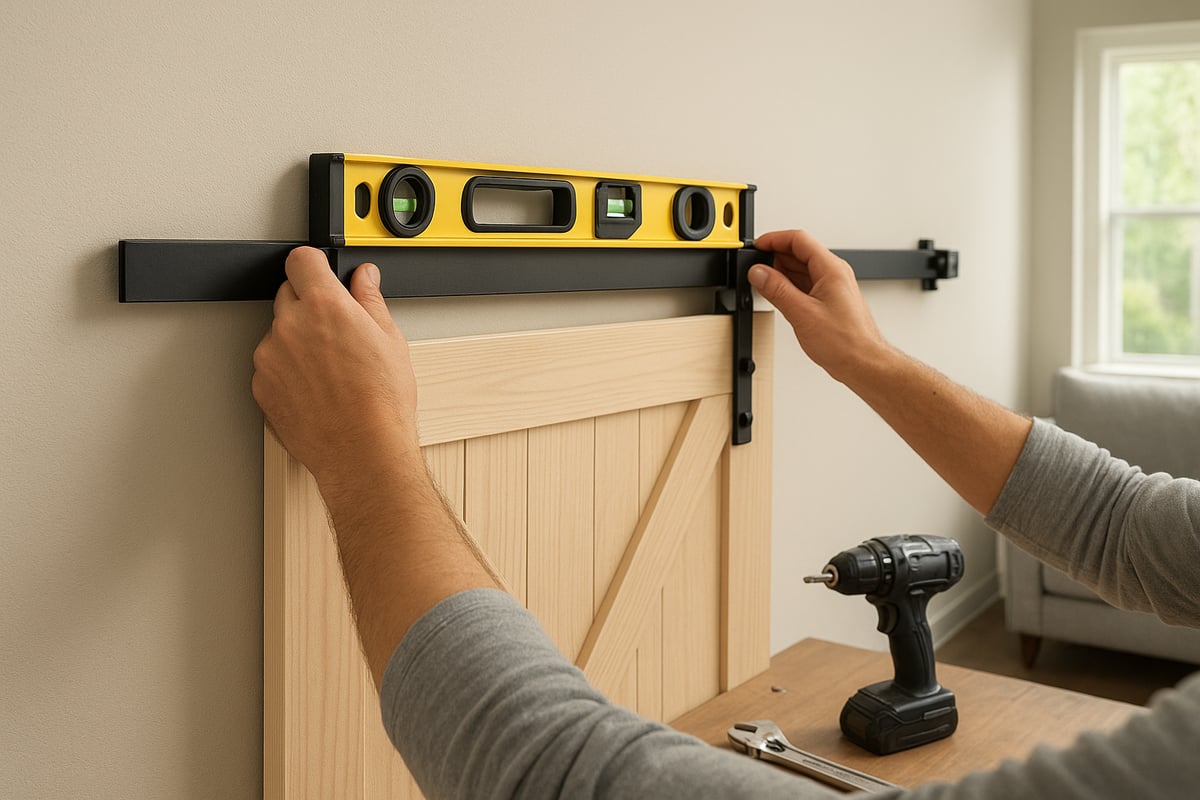
Preparing the Space and Hardware
First things first, prep your space for a barn door track bypass install. Clear the area around your doorway. Move furniture and décor to create a safe, open workspace.
Grab a stud finder and mark where your wall studs are located above the opening. Mark the top and sides of the doorway as reference points for your track. Double-check your kit contents. You should have the main track, hangers, brackets, spacers, floor guides, and all necessary fasteners.
Lay out your tools: level, drill, tape measure, and a wrench. Pre-drill pilot holes for mounting hardware. This helps prevent splitting and keeps your install precise. Always wear safety glasses and gloves. Working safely ensures you’ll enjoy your barn door track bypass for years to come.
Installing the Bypass Track System
Now, let’s get that barn door track bypass system on the wall or ceiling. Start by measuring the mounting height. Mark a level line where the track will go, making sure it’s high enough for both the doors and rollers.
For wall-mounted tracks, locate studs and use appropriate anchors if you hit drywall. If you’re ceiling-mounting, find joists or use heavy-duty anchors. Attach bypass brackets or spacers as needed, especially if you have layered doors.
Secure the track along your marked line. Check for level as you tighten the bolts. Good alignment now means your barn door track bypass will slide smoothly later. Don’t rush—precision here pays off.
Hanging the Barn Doors
With your barn door track bypass hardware in place, it’s time to hang the doors. Start by attaching the hangers to the top of each door slab. Use the included bolts and double-check for tightness.
Lift each door and carefully place the hangers onto the track. You might need a helper, especially if your doors are heavy. Adjust the height and spacing of each door using the hanger bolts. Make sure the doors move without catching or rubbing.
Test the movement of each door independently. A well-installed barn door track bypass should allow each door to glide easily past the others. Take a moment to admire your progress—you’re halfway there.
Adding Floor Guides and End Stops
Floor guides are essential for keeping your barn door track bypass stable and on track. Without them, doors can wobble or swing out from the wall. Choose guides that match your door thickness and number of panels.
Install a floor guide for each door layer. Position them so they keep the door aligned but don’t impede movement. Anchor them securely to the floor, following the kit instructions.
Don’t forget end stops—they prevent the doors from sliding off the track. Adjust both guides and stops for smooth, safe operation. For more details on choosing the right guide, check out Floor Guides for Barn Doors.
Final Adjustments and Testing
You’re almost done with your barn door track bypass project. Now, check door clearances at the top and bottom. Open and close each door, watching for rubbing or sticking. If needed, fine-tune the hanger bolts or spacers.
Make sure the bypass action is smooth. The doors should slide past each other without resistance. Test any soft-close dampers or stops. Tighten any loose bolts or brackets.
Safety check: confirm all hardware is secure and nothing wobbles. Your barn door track bypass should feel sturdy and effortless by this stage.
Troubleshooting Common Issues
Even with careful installation, barn door track bypass systems can have hiccups. Here’s a quick troubleshooting table:
Issue |
Solution |
|---|---|
Doors stick/rub |
Adjust hangers or spacers |
Track noise |
Lubricate rollers, check alignment |
Gaps/overlap issues |
Recheck door sizing, adjust stops |
Roller derailment |
Tighten brackets, realign guides |
Loose hardware |
Inspect and retighten as needed |
If problems persist, review your install steps or reach out to the manufacturer. Sometimes, a second set of eyes helps spot small issues that affect barn door track bypass performance.
Maintenance Tips for Lasting Performance
Keep your barn door track bypass gliding smoothly with a little routine care. Wipe down the track and rollers monthly to remove dust or debris. Check all bolts and fasteners for tightness, especially after the first few weeks of use.
Lubricate moving parts with a silicone-based spray to prevent squeaks. Inspect the doors and track for signs of wear or shifting. Seasonal humidity can affect wood doors, so check for swelling or warping.
With regular upkeep, your barn door track bypass will look great and work flawlessly for years. Enjoy the style and functionality you’ve added to your space.
Design, Style, and Hardware Selection Tips for 2025
Looking to make your barn door track bypass system a true style statement in 2025? The right design, finish, and hardware can transform a purely functional feature into a stunning focal point. Let’s break down the latest trends, how to match your bypass system to your space, smart upgrade ideas, and what the pros recommend for flawless results.
Latest Trends in Bypass Barn Door Hardware
Barn door track bypass hardware is getting a modern makeover for 2025. Matte black remains a top pick, but brushed nickel and rustic steel are gaining ground for their versatility. Minimalist designs are in, with slim tracks and concealed rollers that blend seamlessly into contemporary spaces.
Decorative roller styles, like diamond or arrow shapes, add a personal touch. Some systems now integrate with smart home features, letting you control doors with your phone. Eco-friendly materials are also trending, making it easier to choose hardware that’s both stylish and sustainable.
Matching Bypass Systems to Interior Styles
When choosing a barn door track bypass, think about your home’s overall style. Modern interiors often call for sleek lines and geometric door panels. Farmhouse spaces look great with classic or slanted stripe doors and rustic hardware finishes.
Handles and pulls are more than just functional—they can tie the whole look together. Want your bypass doors to stand out? Consider bold finishes or unique panel designs. Drawing inspiration from real-world installs is a great way to see how different bypass systems fit various aesthetics.
Upgrades and Accessories for Enhanced Functionality
Small upgrades can make a big difference in your barn door track bypass system’s performance and feel. Soft-close dampers are a must if you want quiet, gentle operation—especially in bedrooms or shared spaces.
Floor guides boost stability, keeping heavy doors on track. Custom handles and pulls let you personalize your setup. Extension tracks work well for oversized openings, and privacy locks are handy for bedrooms or bathrooms. Mixing and matching these accessories helps you create a bypass system tailored to your needs.
Expert Recommendations for Hardware Selection
Choosing the right barn door track bypass hardware starts with the basics: match the kit to your door’s weight and size, and make sure it’s compatible with your wall or ceiling. Look for kits with a solid warranty and strong customer support. Complete kits often save time and hassle compared to buying parts separately.
Trusted brands with positive reviews are your safest bet, especially if you want peace of mind on durability and style. For more in depth advice on selecting double bypass hardware that balances function and design, check out the Double Bypass Barn Door Hardware Guide. Relying on expert guides and support resources can make all the difference for a smooth, stylish installation.
Professional Tips for Smooth, Hassle-Free Installation
Getting your barn door track bypass project right starts with some simple but crucial steps. Whether you are a seasoned DIYer or just getting started, following a few professional tips can make all the difference in achieving a flawless, hassle-free installation.
Pre-Installation Best Practices
Before you even touch a tool, take time to double-check all your measurements for the barn door track bypass. Measure the opening twice, confirm door slab sizes, and estimate clearances above and beside the opening. Review the manufacturer’s instructions thoroughly, as each barn door track bypass system can have unique requirements. Gather all your tools and hardware ahead of time, laying them out for easy access. If your doors are heavy, plan to have a friend help with lifting and positioning. Setting realistic expectations for your timeline will help you avoid rushing and ensure a smooth start.
Avoiding the Most Common Installation Pitfalls
Many barn door track bypass installations run into trouble because of small, avoidable mistakes. Misaligned tracks are a leading cause of sticking or noisy doors. Always use a level, and mark your mounting points carefully. Make sure your wall or ceiling is strong enough to support the weight of the barn door track bypass system. Skipping floor guides can result in wobbly doors, so never overlook this step. Be gentle when tightening screws and bolts to avoid stripping. Finally, test the movement of your doors before securing everything down for good.
When to Call in a Professional
Sometimes a barn door track bypass project is best left to a pro. If your wall or ceiling has complex framing, or if you are working with oversized or custom doors, hiring a professional ensures safety and a perfect finish. Limited DIY experience or confidence is another good reason to call for help. Many manufacturers also require professional installation for warranty compliance. Choosing expert installation can save you time, prevent costly mistakes, and guarantee that your barn door track bypass functions beautifully for years to come.
The Barn Door Hardware Store: Your Expert Partner for Bypass Systems
Since 2016, The Barn Door Hardware Store has specialized in barn door track bypass solutions. Their selection includes single, double, heavy duty, and custom kits, all crafted from premium materials for durable performance. You benefit from expert support, free shipping, and a lifetime warranty on every barn door track bypass system. Whether you need selection advice or installation guidance, their team is ready to help. With over 25,000 satisfied customers, they are the trusted partner for your next barn door project.
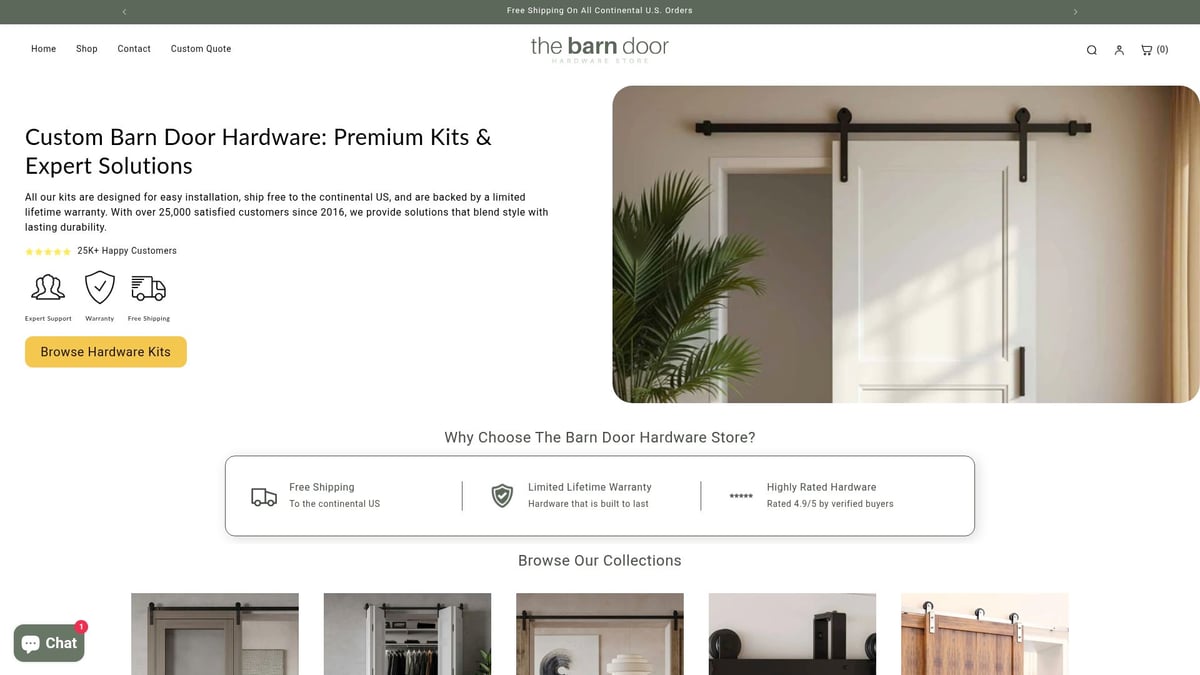
Frequently Asked Questions about Bypass Barn Door Tracks
Ever found yourself scratching your head over barn door track bypass systems? You are not alone. Here are answers to the most common questions, so you can approach your project with confidence.
Can I Install a Bypass System Myself?
Absolutely, many DIYers successfully install barn door track bypass hardware on their own. If you are comfortable using standard tools and following detailed instructions, you can handle this project. Tasks include measuring, marking studs, and mounting tracks.
You will need a drill, level, tape measure, and perhaps an extra set of hands for lifting doors. Most kits come with step-by-step guides, so read them carefully. If your wall is unusually tricky or your doors are extra heavy, consider getting professional help. Remember, patience and planning are your best friends for a smooth barn door track bypass installation.
What Are the Main Differences Between Single and Double Track Bypass?
The main difference between single and double barn door track bypass systems is how the doors move and how much space they need. A single track allows doors to slide in front of each other on the same rail, saving space and offering a modern look. Double tracks let each door move independently on its own rail, which is great for wider openings or when you want both doors to stack neatly on opposite sides.
Hardware and installation can be more complex for double tracks, and you will see more hardware exposed. Curious about which is best for your project? Check out this Single vs. Double Bypass Barn Doors guide for a detailed comparison.
How Do I Maintain and Troubleshoot My Bypass System?
Keeping your barn door track bypass system running smoothly is simple with regular care. Wipe the tracks and rollers with a soft cloth to keep dust at bay. Every few months, check that all screws and bolts are tight.
If you hear squeaks or notice sticking, a drop of silicone lubricant on the rollers and track usually does the trick. Make sure the floor guides are clean and aligned. If a door starts to wobble or derail, inspect the hangers for wear or misalignment. Most issues can be fixed at home, but for persistent problems, consult your manufacturer’s support.
Are Bypass Barn Door Systems Suitable for All Rooms?
Barn door track bypass systems are a popular choice for closets, pantries, laundry rooms, and wide doorways. They are perfect when wall space is limited and you want maximum access. However, in very tight or oddly shaped spaces, alternatives like bifold or pocket doors may fit better.
When deciding if this style is right for your home, think about privacy, light control, and aesthetics. For more insights, check out this overview of the Pros and Cons of Bypass Barn Doors. With the right planning, barn door track bypass solutions can be both functional and stylish in a variety of settings.
So now that you’ve got the inside scoop on bypass barn door track systems and all the planning tips for a smooth installation, are you feeling ready to tackle your own project? Whether you’re updating a closet, pantry, or creating a room divider, having the right hardware really makes all the difference—not just in how your doors look, but how they glide every single day. If you want to take the guesswork out of choosing durable, stylish hardware backed by expert support and a lifetime warranty, why not check out the options at The Barn Door Hardware Store? You’ve got this!
